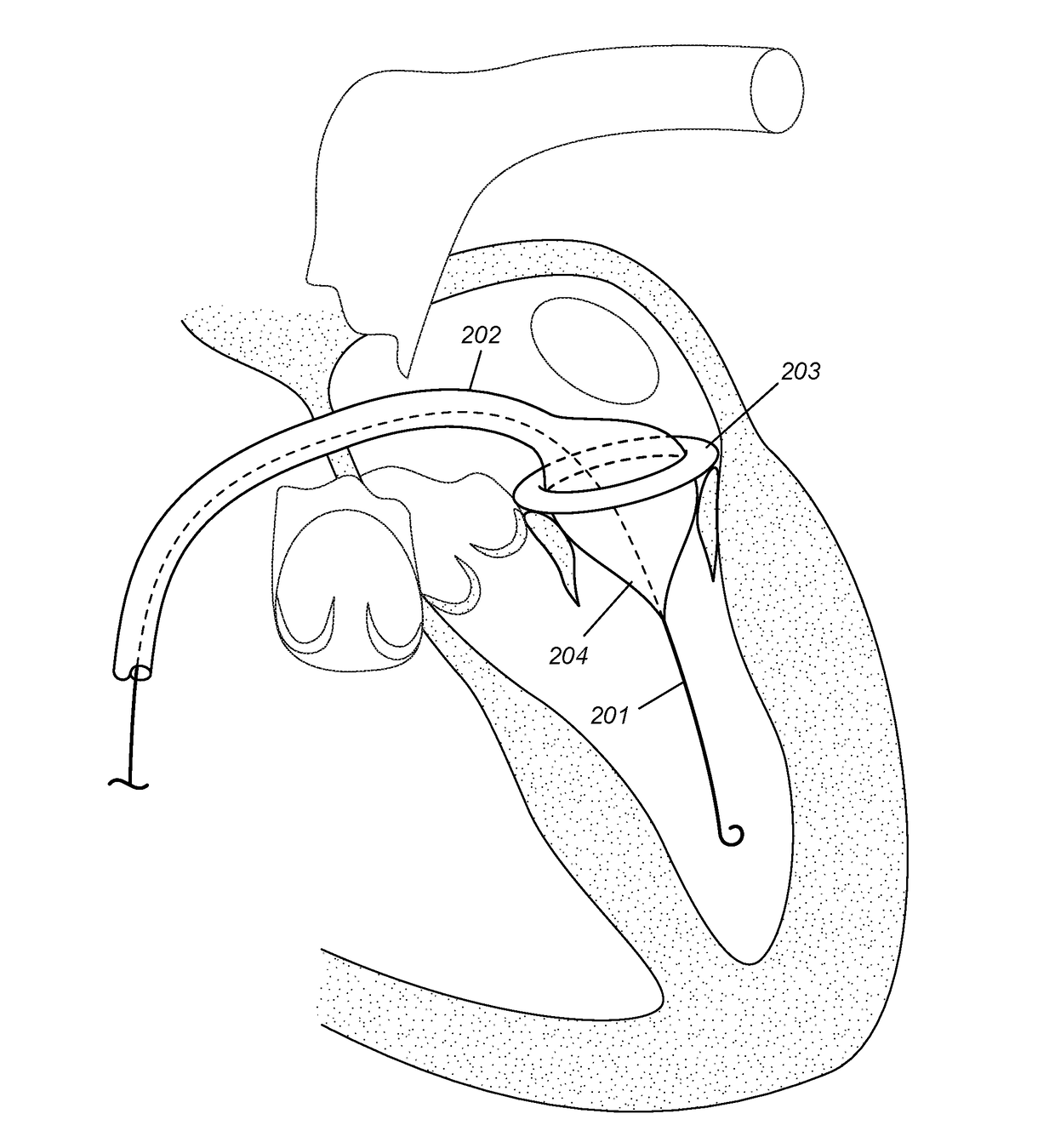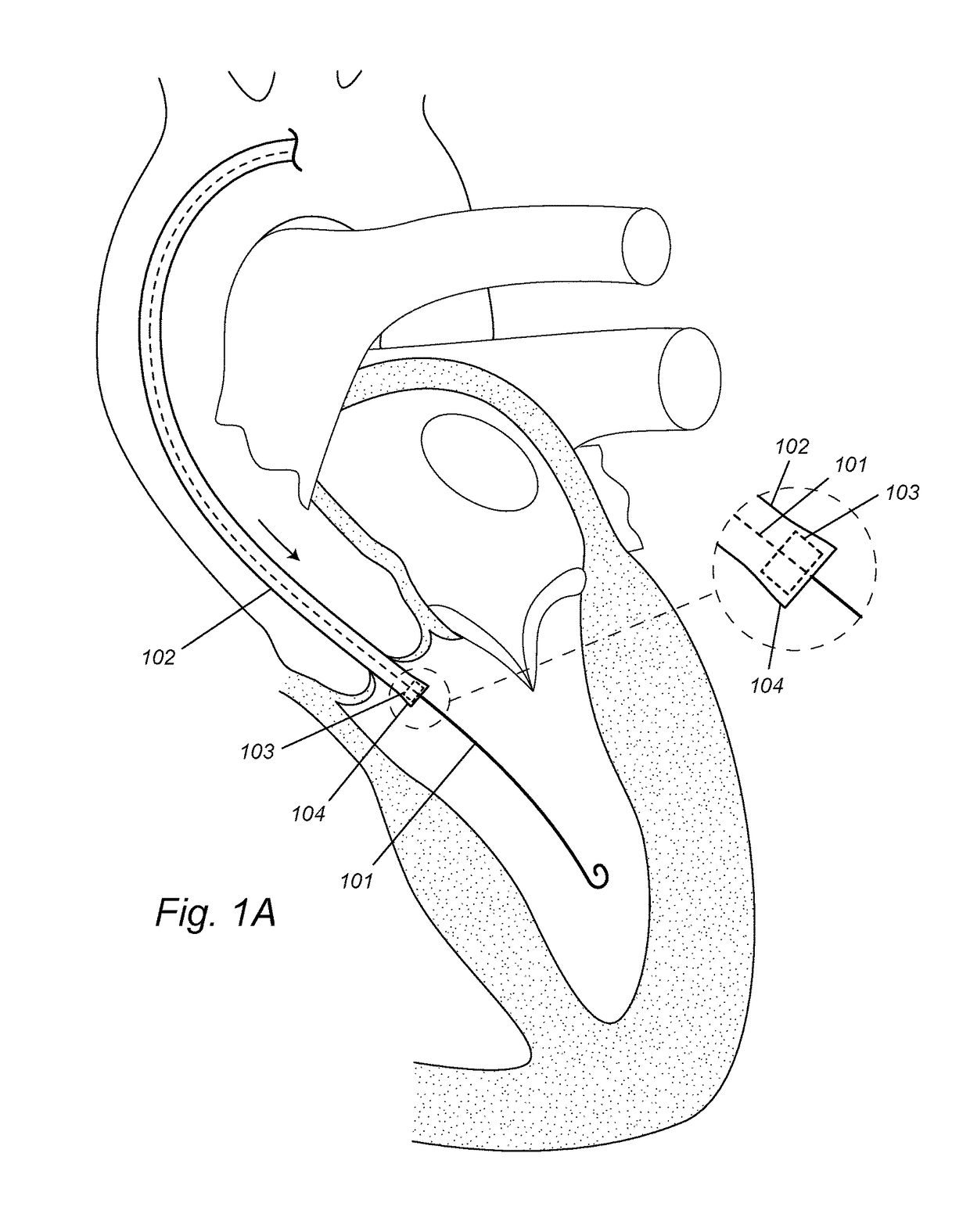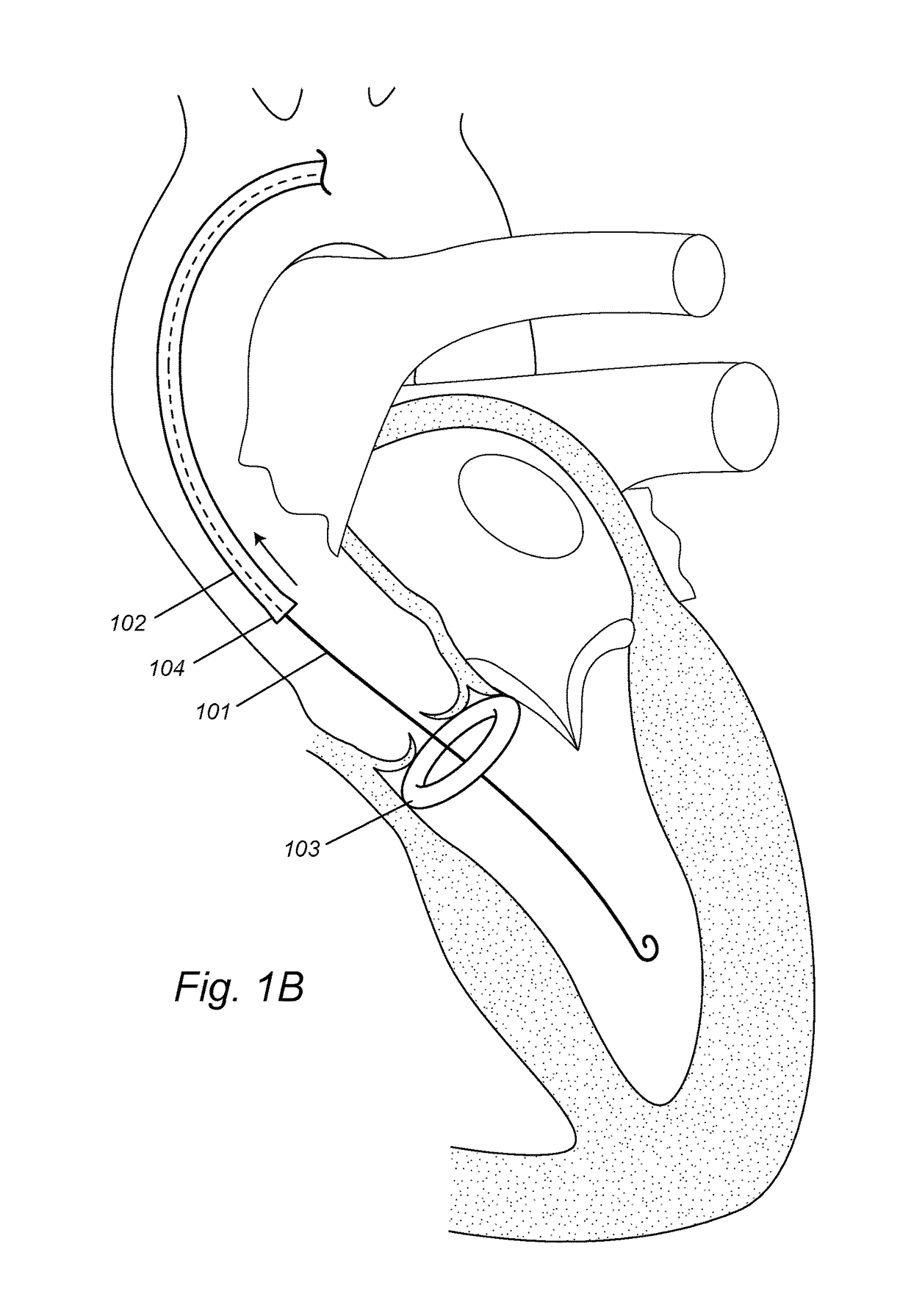Devices, systems, and methods to optimize annular orientation of transcatheter valves
a technology of annular orientation and transcatheter valve, which is applied in the field of devices, systems and methods to optimize the annular orientation of the transcatheter valve, can solve the problems of loss of elasticity and efficiency, increased risk of stroke or pulmonary embolism, and other complications
- Summary
- Abstract
- Description
- Claims
- Application Information
AI Technical Summary
Benefits of technology
Problems solved by technology
Method used
Image
Examples
example 1
Self-Expandable DONUT
For Aortic Valve
[0059]FIGS. 1A-1B illustrate an example of an implantation procedure for a DONUT device as disclosed herein. After induction of anesthesia, and sterile preparation, an incision is performed at the femoral artery. Alternatively, percutaneous femoral access may be performed with or without pre-closure. A guide wire 101 is inserted via the femoral artery and the ascending aorta through the aortic valve into the left ventricle (FIG. 1A). A self-expandable DONUT device 103 is compressed and enclosed in the enclosing sheath 104 at the distal end of a first delivery catheter 102. The loaded first delivery catheter 102 is advanced over the guide wire 101 and inserted through the aortic valve into the left ventricle, and places the compressed DONUT device 103 on the ventricular side of the aortic valve and near the valve annulus (FIG. 1A). The first delivery catheter 102 is retracted and the compressed DONUT device 103 is hence released out of the enclosi...
example 2
Balloon-Expandable DONUT
For Aortic Valve
[0061]FIGS. 2A-2C illustrate an example of an implantation procedure for a DONUT device as disclosed herein. After induction of anesthesia, and sterile preparation, an incision is performed at the femoral artery. Alternatively, percutaneous femoral access may be performed with or without pre-closure. A guide wire 201 is inserted via the femoral artery and the ascending aorta through the aortic valve into the left ventricle (FIG. 2A). A balloon-expandable DONUT device 203 is compressed and mounted over the inflatable balloon 204 at the distal end of a first delivery catheter 202. The loaded first delivery catheter 202 is advanced over the guide wire 201 and inserted through the aortic valve into the left ventricle, and places the compressed DONUT device 203 on the ventricular side of the aortic valve and near the valve annulus (FIG. 2A). The inflatable balloon 204 is inflated to expand the compressed DONUT device 203 (FIG. 2B). The expanded DON...
example 3
Delivery of Self-Expandable Replacement Valve
[0063]This is performed after the DONUT device is deployed to the aortic valve peri-annular region. A self-expandable replacement valve 105 is compressed and enclosed in the enclosing sheath 107 at the distal end of a second delivery catheter 106. The loaded second delivery catheter 106 is advanced over the guide wire 101 and inserted through the aortic valve into the left ventricle, and places the compressed replacement valve 105 across the aortic valve and the center hole of the DONUT device (FIG. 3A). The second delivery catheter 106 is retracted and the compressed replacement valve 105 is hence released out of the enclosing sheath 107 to expand (FIG. 3B). The expanded replacement valve anchors to the center hole of the DONUT device, thereby replacing the native aortic valve (FIG. 3B).
[0064]In various embodiments, the same or similar steps may be used for other heart valves, such as the mitral valve, pulmonary valve and tricuspid valve...
PUM
 Login to View More
Login to View More Abstract
Description
Claims
Application Information
 Login to View More
Login to View More - R&D
- Intellectual Property
- Life Sciences
- Materials
- Tech Scout
- Unparalleled Data Quality
- Higher Quality Content
- 60% Fewer Hallucinations
Browse by: Latest US Patents, China's latest patents, Technical Efficacy Thesaurus, Application Domain, Technology Topic, Popular Technical Reports.
© 2025 PatSnap. All rights reserved.Legal|Privacy policy|Modern Slavery Act Transparency Statement|Sitemap|About US| Contact US: help@patsnap.com



